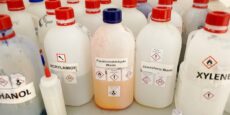

The following is excerpted from an online article posted by MedicalXpress.
Nations must start testing and regulating chemicals and chemical products as closely as the current systems that safeguard prescription drugs or risk rising rates of chronic illnesses among children, according to a New England Journal of Medicine report by a group of experts writing as the Consortium for Children’s Environmental Health.
Global chemical inventories contain an estimated 350,000 products—such as manufactured chemicals, chemical mixtures, and plastics. Despite the risks of environmental pollution and human exposure, the manufacture of synthetic chemicals and plastics is subject to insufficient legal or policy constraints.
That regulatory vacuum must be replaced by new laws that prioritize health protection over the rampant production of chemicals and plastics, according to the co-authors, who include Boston College epidemiologist Philip Landrigan, MD, environmental law scholar David Wirth, biologist Thomas Chiles, and epidemiologist Kurt Straif.
“Under new laws, chemicals should not be presumed harmless until they are proven to damage health,” the authors said. “Instead, chemicals and chemical-based products should be allowed to enter markets and remain on markets only if their manufacturers can establish through rigorous, independent, premarket testing that they are not toxic at anticipated levels of exposure.”
The call to action is the result of a two-year project by a group of independent scientists from 17 high-profile scientific institutions in the U.S. and Europe. The report was developed to enable a coordinated approach to reducing the ever-increasing levels of chronic disease being faced by children around the world.
Non-communicable diseases (NCDs) are the principal causes of morbidity and mortality in children today, the authors note. Their incidence and prevalence are on the rise. Emerging research links multiple NCDs in children to manufactured synthetic chemicals.
Yet manufacture of synthetic chemicals and plastics is subject to few legal or policy constraints. Unlike pharmaceuticals, synthetic chemicals are brought to market with little prior assessment of their health impacts and almost no postmarketing surveillance for longer-term adverse health effects.
Fewer than 20% of these chemicals have been tested for toxicity, and fewer still for toxic effects in infants and children. Associations between widely used chemicals and disease in children continue to be discovered with distressing frequency, and it is likely that there are additional, still unknown links.
Protecting children from chemicals’ dangers will require fundamental revamping of current law and restructuring of the chemical industry, the co-authors write.
Source: MedicalXpress
https://medicalxpress.com/news/2025-01-urges-chemical-children-health.html
Source: Home Word






